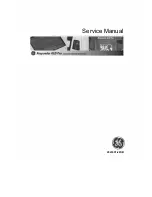
Connecting the probe
R&S
®
RT-ZC30
22
User Manual 1409.7872.02 ─ 04
Continuous input of current exceeding the rated maximum or repeated activa-
tion of the safety function may result in damage to the device.
●
Even if the input current does not exceed the rated continuous maximum cur-
rent, continuous input for an extended period of time may result in activation
of the safety circuit to prevent damage resulting from heating of the sensor.
At high ambient temperatures, the built-in safety circuit may activate at current
input levels below the rated continuous maximum current.
●
Current measurement exceeding approx. 1 kHz may result in temperature rise
on the sensor-head. This is attributed to excitation loss that cannot be preven-
ted due to natural physical principles. Be careful to avoid injury, electric shock
due to short-circuits, or damage to the device that may be caused by the
increased temperature.
●
Do not place any unclamped conductor with an electric current of a frequency
of 10
kHz or more near the sensor head. Current flowing in the conductor
nearby may heat up the sensor head and cause its temperature to rise, lead-
ing to damage to the sensor. For example, when one side of a go-and-return
conductor is clamped and the other side is also placed near the sensor head
as shown in the diagram, even if the electric current is lower than the consec-
utive maximum current, electric currents in both sides will heat up the sensor
and raise the temperature, thereby causing damage to the sensor.
Drift, oscillation, and sound
●
Immediately after powering on, the probe may be subject to an appreciable
offset drift due to the effect of self-heating. Therefore, warm up the probe for
about 30
minutes before carrying out measurements.
●
When performing continuous measurements, be aware that the offset voltage
drifts, depending on factors such as the ambient temperature.
●
Under certain circumstances, oscillation may occur while the power supply is
on. This does not indicate a malfunction. Oscillation can be stopped and oper-
ation restored to normal by opening and closing the sensor head.
Considerations for measurements











































